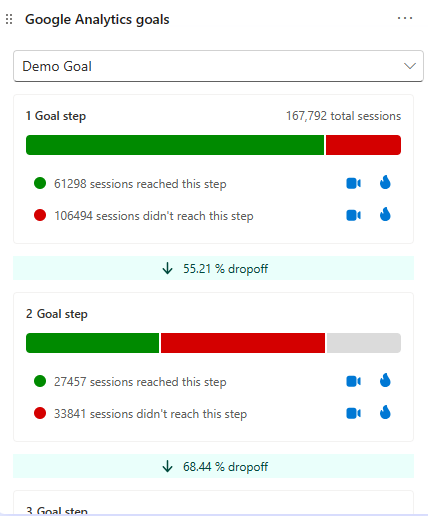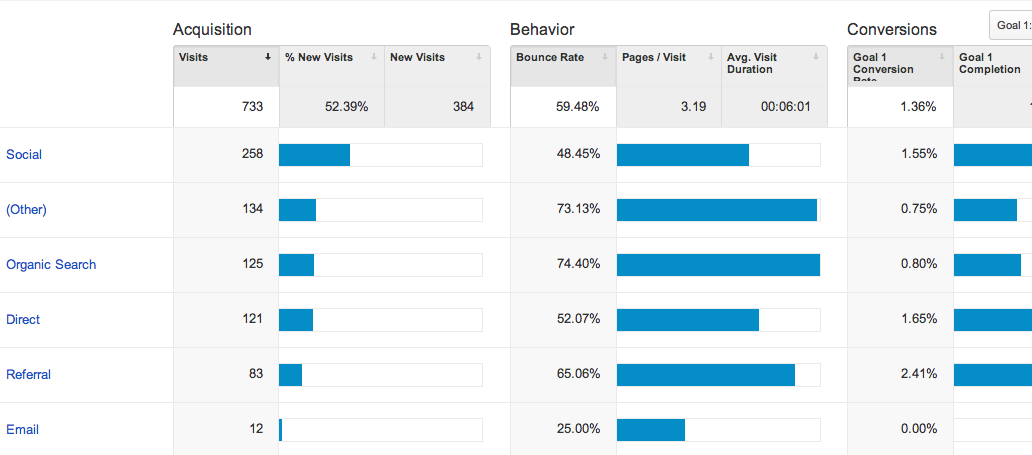Comprehending What Data Is Google Analytics Goals Unable to Track
Comprehending What Data Is Google Analytics Goals Unable to Track
Blog Article
Debunking Google Analytics Limitations: Reveal What Information Goals Can not Track
In the realm of digital analytics, Google Analytics stands as a powerful tool that offers useful insights into web site efficiency and individual habits. Nevertheless, in the middle of its capacities, there exist limitations that often go unnoticed. Understanding what Google Analytics can not track is vital for a comprehensive grasp of information analysis and decision-making procedures. From the complexities of user communication with dynamic web content to the intricacies of cross-device user trips, these limitations shed light on locations that may remain covered from standard analytics perspectives. By untangling these restrictions, a clearer image arises, enabling more enlightened methods and fine-tuned insights right into individual engagement and conversions.

Individual Communication With Dynamic Content
Individual interaction with dynamic material plays a critical duty in recognizing customer behavior on websites and optimizing the overall user experience. By tracking user communications with dynamic material, site owners can acquire important insights right into customer interaction, preferences, and habits - what data is google analytics goals unable to track.
Google Analytics uses numerous tools to track user interactions with vibrant content, such as event monitoring and virtual pageviews. Occasion monitoring enables you to keep track of details individual activities, like clicking a button or seeing a video, providing information on exactly how users connect with dynamic components.
Cross-Device Individual Journeys
Exactly how can modern analytics devices track the complicated courses individuals take across multiple devices in their online trips? Cross-device customer journeys present a significant challenge for monitoring and analyzing individual behavior properly. As users engage with applications or web sites using numerous gadgets such as smartphones, tablet computers, and desktops, it comes to be important to recognize how they move in between these systems to optimize individual experience properly.
Google Analytics encounters constraints in tracking cross-device user journeys due to privacy concerns and technical constraints - what data is google analytics goals unable to track. While it can offer understandings right into specific devices' interactions, tracking a smooth user journey across several devices continues to be a difficulty. This restriction can lead to incomplete data and fragmented customer insights, making it difficult for companies to create a unified view of the consumer trip
To address this issue, organizations can make use of innovative analytics tools that provide cross-device tracking capacities, permitting them to get a much more holistic understanding of customer habits. By leveraging these tools, services can connect the gap in tracking cross-device customer journeys and maximize their electronic methods for a seamless user experience.
Offline Conversions and Acknowledgment
As services navigate the challenges of tracking cross-device individual journeys, one more critical aspect to think about is the realm of offline conversions and acknowledgment in the realm of information analytics. While Google Analytics offers beneficial insights into on-line customer behavior, it drops short when it comes to tracking conversions that take place offline. This limitation postures a considerable obstacle for companies that have both online and offline sales networks.
Offline conversions, such as purchases made in physical stores or via call facilities, are vital to recognizing the complete client trip. Without the ability to associate these offline conversions to details online communications, businesses might battle to accurately determine the influence of their electronic advertising initiatives.
To resolve this gap, businesses can check out alternate solutions such as integrating CRM systems with on-line analytics devices or utilizing distinct promotion codes that can be mapped back to on-line projects. By bridging the gap between online and offline data, companies can get an extra comprehensive understanding of their customers' behavior and improve their general advertising approaches.
Person Customer Identification
In the realm of data analytics, the ability to accurately identify private users across different on the internet touchpoints is a crucial challenge for companies seeking to customize and enhance their advertising approaches. While Google Analytics provides beneficial understandings right into customer actions and communications, it falls helpful resources brief in allowing the identification of specific individuals as a result of personal privacy worries and technical restrictions. Google Analytics uses distinct identifiers such as cookies to track user sessions and behavior, however these do not equate to identifying specific customers in a personal sense.

Data From Secure Pages
Regardless of the enhancing frequency of protected web pages on websites, getting data from these encrypted resources offers a distinct obstacle for digital analytics systems like Google Analytics. Secure web pages, indicated by HTTPS in the link, secure data traded in between the user's internet browser and the website's web server to guarantee personal privacy and safety. While this encryption is essential for protecting sensitive information, it likewise poses restrictions for tracking user habits and gathering analytics information.
Google Analytics faces challenges in accumulating in-depth details from safe and secure web pages due to the file encryption procedures in position. Consequently, certain data points such as recommendation resources, keyword searches, and also some user interactions might not be totally recorded when users access a website through a protected link. This constraint can influence the precision and efficiency of the data analysis, leading to gaps in comprehending individual habits and look at this now choices on safe and secure pages.
To browse this obstacle, digital experts might need to check out alternate monitoring techniques or take advantage of other tools particularly developed to gather insights from secure pages. By adjusting strategies to suit these constraints, businesses can still derive valuable analytics despite the constraints presented by encrypted connections.
Verdict
Finally, Google Analytics has constraints in tracking individual communication with dynamic material, cross-device user trips, offline conversions, specific customer recognition, and information from protected pages. These restrictions hinder an extensive understanding of customer actions and might bring about voids in data analysis. Regardless of its beneficial understandings, Google Analytics may not offer use this link a complete image of individual engagement throughout different touchpoints. It is necessary for services to be familiar with these limitations and think about extra tools for a more holistic sight of their data.
User communication with vibrant material plays a vital role in understanding customer behavior on internet sites and enhancing the total user experience. By tracking user communications with dynamic material, site proprietors can gain important understandings into individual involvement, choices, and behaviors.
Google Analytics utilizes special identifiers such as cookies to track customer sessions and behavior, but these do not equate to determining specific customers in an individual sense.
As a result, specific data factors such as reference resources, keyword searches, and even some user interactions may not be completely recorded when customers access a site with a safe and secure link.In conclusion, Google Analytics has limitations in tracking user interaction with dynamic material, cross-device individual journeys, offline conversions, private user identification, and information from safe web pages.
Report this page